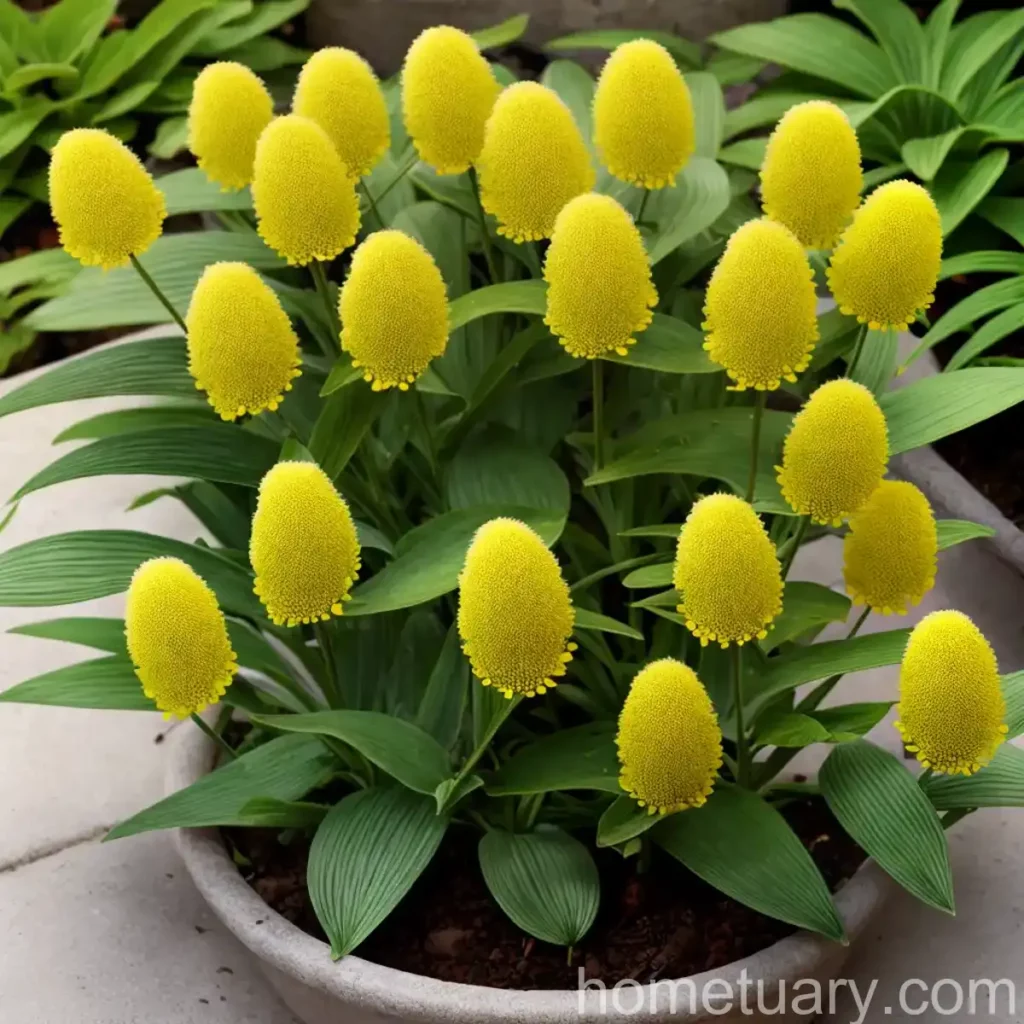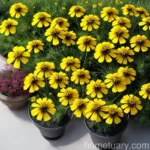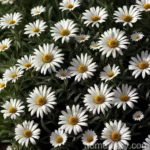Melampodium (Melampodium divaricatum): A Comprehensive Guide for Plant Enthusiasts
In the world of gardening and landscaping, Melampodium divaricatum, commonly known as “melampodium,” is a popular and versatile plant that captivates enthusiasts with its vibrant blooms, low-maintenance nature, and adaptable characteristics. As a plant scientist with a profound interest in horticulture, I am excited to delve into the world of melampodium and provide a comprehensive guide for anyone seeking to cultivate, nurture, and appreciate this remarkable plant species.
What is Melampodium (Melampodium divaricatum)?
Melampodium divaricatum, belonging to the Asteraceae family, is a charming and resilient flowering plant native to Mexico and Central America. This herbaceous perennial is celebrated for its abundant and cheerful yellow blossoms, which create a striking visual impact in a variety of garden settings. The plant’s botanical name, Melampodium divaricatum, reflects its distinctive genus and species, while the common name “melampodium” encompasses various cultivars and related species within the Melampodium genus.
Key Takeaways – Melampodium (Melampodium divaricatum)
Before we delve into the detailed aspects of cultivating and caring for melampodium, let’s briefly overview the key takeaways associated with this delightful plant:
- Scientific Name: Melampodium divaricatum
- Plant Type: Herbaceous Perennial
- Native Habitat: Mexico and Central America
- Flower Color: Vibrant Yellow
- Adaptability: Versatile in Landscaping and Container Gardening
- Attributes: Drought-Tolerant, Low-Maintenance, Attracts Pollinators
Now, let’s explore the essential considerations for successfully nurturing and enjoying the beauty of melampodium in various horticultural settings.
Culture
Cultivating melampodium involves understanding and implementing the plant’s specific cultural requirements to ensure its optimal growth and vitality. From soil composition to watering practices, mastering the cultural aspects is fundamental to fostering a thriving melampodium garden or container display.
Uses
Melampodium serves diverse horticultural purposes, enhancing landscapes, gardens, and container plantings with its radiant blooms and adaptable nature. Its ornamental value is underscored by its ability to thrive in different settings, including:
- Flower Beds
- Borders and Edges
- Rock Gardens
- Container Gardens
- Coastal Landscapes
- Xeriscapes
In addition to its aesthetic appeal, melampodium can be included in wildlife gardens to attract pollinators such as bees and butterflies, contributing to the ecological diversity of the garden.
Water
Melampodium showcases notable resilience to drought conditions, making it an ideal choice for water-wise gardening and landscapes. While the plant exhibits a remarkable tolerance to dry spells, regular watering is essential in the initial establishment phase to promote healthy root development and consistent growth. Once established, melampodium can thrive with minimal supplemental watering, particularly in regions with infrequent rainfall or arid climates.
Sunlight
A hallmark of melampodium’s adaptability is its preference for full sunlight, where it flourishes best in bright, unobstructed sunlight for the majority of the day. This makes it an excellent option for gardens and landscapes with ample sunlight exposure. In regions with scorching temperatures, melampodium’s heat resistance ensures that it maintains its vibrant blooms and foliage, even in the peak of summer.
Fertilizer
While melampodium exhibits resilience to nutrient-poor soils, periodic fertilization can enhance its growth and blooming vigor, particularly in containers or garden beds with limited soil nutrients. Incorporating a balanced, slow-release fertilizer into the soil during the planting phase can provide the plant with essential nutrients for sustained growth and abundant flowering throughout the growing season.
Soil
Melampodium prefers well-draining soil with a slightly acidic to neutral pH range, enabling proper moisture management and root aeration. Additionally, the plant adapts to various soil types, ranging from sandy loam to clay, underscoring its versatility in different garden settings. For container plantings, using a high-quality, well-draining potting mix can promote optimal growth and minimize the risk of waterlogging.
Pruning
A notable aspect of melampodium’s low-maintenance nature is its minimal pruning requirements. While the plant doesn’t necessitate extensive pruning, removing spent blooms and occasional light trimming can encourage continuous blooming and maintain a tidy appearance. Additionally, pruning leggy growth or shaping the plant can be performed as needed to enhance its aesthetic appeal and overall form.
Propagation
Propagating melampodium can be achieved through seeds or division, offering plant enthusiasts the opportunity to expand their melampodium collection or share the plant with fellow gardening enthusiasts. Both methods can be effective in producing new plants, and selecting healthy, mature specimens as the propagation source is crucial to ensuring the successful establishment of new melampodium individuals.
Container Popularity
Melampodium’s adaptability and ornamental charisma make it a popular choice for container gardening, where it brightens patios, balconies, and outdoor living spaces with its radiant blooms. Its compact growth habit and resilience to container conditions elevate its appeal as a versatile container plant, allowing plant enthusiasts to incorporate it into diverse container arrangements with ease.
Common Diseases
Melampodium generally exhibits outstanding resistance to diseases, owing to its robust nature and inherent disease tolerance. However, occasional susceptibility to certain fungal infections, such as powdery mildew or leaf spot, may arise in conditions characterized by high humidity and poor air circulation. Implementing preventive measures, such as maintaining adequate spacing between plants and promoting good air circulation, can mitigate the risk of disease development.
Disease Diagnosis
Diagnosing potential diseases affecting melampodium involves identifying characteristic symptoms such as powdery white patches on foliage, discolored spots, or abnormal growth patterns. Upon detecting potential disease signs, prompt intervention through targeted fungicidal treatments or cultural adjustments can effectively manage the issue and safeguard the overall health of the melampodium plants.
Common Pests
Melampodium’s robust constitution extends to its resistance to common garden pests, with minimal susceptibility to infestations. However, occasional encounters with aphids, spider mites, or whiteflies may occur, particularly in conditions of high stress or environmental imbalances. Vigilant monitoring and proactive pest management measures, such as natural predators or insecticidal treatments, can effectively mitigate potential pest issues.
Botanist’s Tips
As a plant scientist deeply invested in the study and horticultural applications of melampodium, I have compiled a set of practical tips to optimize the cultivation and enjoyment of this exceptional plant species:
- Companion Planting: Pair melampodium with compatible companion plants such as ageratum, verbena, or calibrachoa to create visually engaging and harmonious garden displays.
- Pollinator Attraction: Leverage melampodium’s attraction to pollinators by incorporating it into pollinator-friendly gardens or as a vibrant centerpiece in wildlife habitats.
- Container Design: Experiment with diverse container designs and arrangements, integrating melampodium with complementary foliage plants or cascading vines to achieve captivating and dynamic container displays.
- Landscape Integration: Explore the creative integration of melampodium in landscape designs, leveraging its adaptability and aesthetic allure to transform garden borders, flower beds, and rock gardens.
Fun Facts
Delving into the realm of melampodium unveils intriguing and captivating aspects that add depth to the appreciation of this remarkable plant. Here are some fascinating fun facts about melampodium:
- Xeriscaping Champion: Melampodium exemplifies exceptional drought tolerance, making it a stalwart contender for xeriscaping and water-wise landscapes.
- Butterfly Magnets: The vibrant blooms of melampodium entice and nourish butterflies, contributing to the creation of vibrant and dynamic butterfly gardens.
- Versatile Foliage: Apart from its vibrant blooms, melampodium’s lush green foliage provides year-round visual interest, enhancing its appeal as an ornamental plant.
Links to External Resources
To enrich the understanding and knowledge of melampodium and its diverse horticultural dimensions, I have curated a selection of valuable external resources for enthusiasts, gardeners, and horticultural practitioners:
-
“Melampodium divaricatum” – Missouri Botanical Garden
https://www.missouribotanicalgarden.org/PlantFinder/PlantFinderDetails.aspx?kempercode=a548 -
“Melampodium divaricatum – Honeydew Mix” – PlantSelect
https://plantselect.org/product/melampodium-divaricatum-honeydew-mix/ -
“Growing the Blackfoot Daisy: A Plant for Beauty and Toughness” – Texas A&M AgriLife Extension
https://aggie-horticulture.tamu.edu/newsletters/hortupdate/2019/may/blackfoot-daisy/ -
“Melampodium divaricatum” – High Country Gardens
https://www.highcountrygardens.com/perennial-plants/melampodium
In Conclusion
Melampodium divaricatum, with its vibrant blooms, resilient nature, and versatile applications, stands as a compelling botanical treasure for gardening, landscaping, and horticultural enthusiasts. As we navigate the intricacies of cultivating and appreciating melampodium, it is my fervent hope that this comprehensive guide will serve as a beacon of knowledge and inspiration, empowering individuals to embark on a captivating journey with this exceptional plant. From container gardening to landscape design, melampodium’s vibrant presence and low-maintenance allure make it a cherished addition to diverse horticultural settings, enriching outdoor spaces with its radiant charm and enduring beauty.















